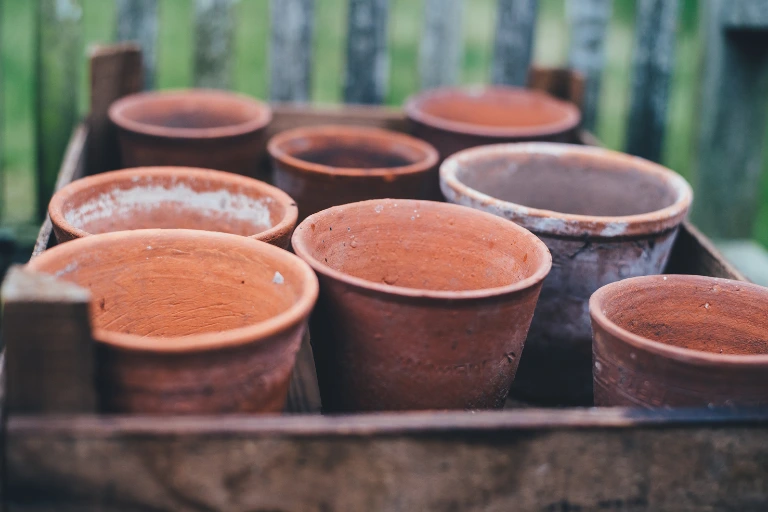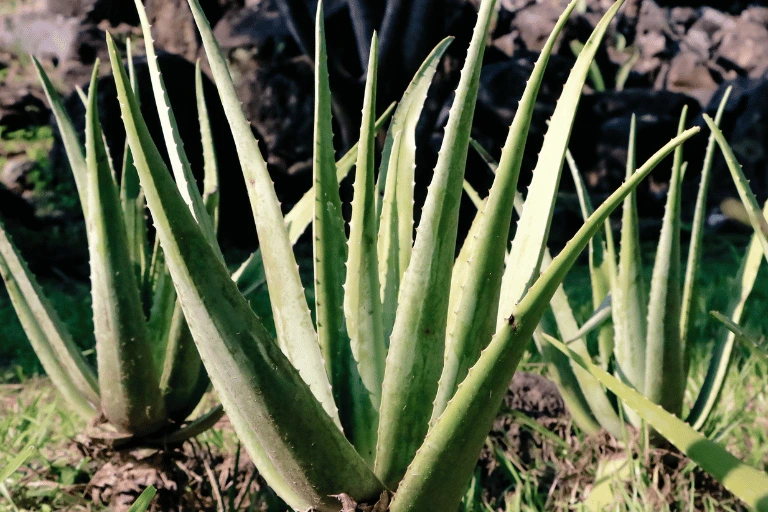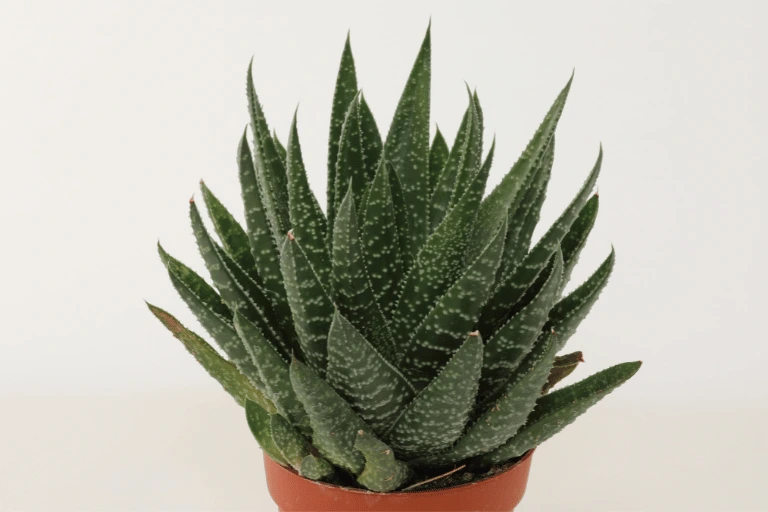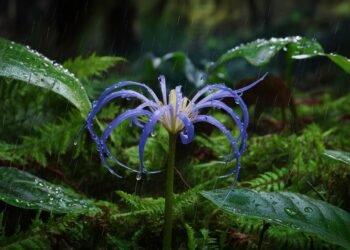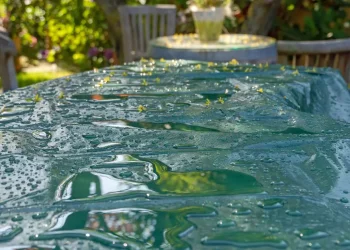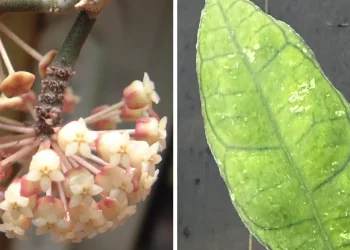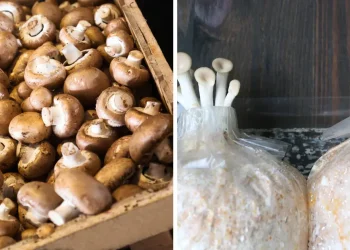I love succulents. They are very easy to take care of, they can survive long weeks without water and with very little care, and many gardeners pick them as their first plant.
I bought one succulent like that at my local nursery, thinking it was just a cute little desk plant. A year has gone by, and this “cute” succulent now takes up half my windowsill. Okay, maybe that’s a slight exaggeration, but it did grow much larger than I anticipated. So the question is if this is its final size or if a succulent can grow even bigger.
Well, it turns out that succulents can grow to be pretty darn big. Some species can even reach up to 8 feet (2.5 meters) in height! And all that can happen just within a few months.
Knowing how big succulents get is essential when choosing which one you want. That’s at least if you don’t want your succulent to take over your entire living room. There are hundreds of different species, and I will cover the most common ones. And also give you a few tips on how to encourage succulents to grow larger.
Factors That Affect The Growth of Succulents
As any other plant, succulents will grow larger in ideal conditions. There are many different factors that affect how big your succulent can grow.
The biggest factor is, of course, the type of succulent you bought. But if we don’t take this one into account, these six factors highly influence the size:
The Size of the Pot
The size of the pot can have a significant impact on the growth of your succulent.
Plants need enough room to expand their roots and grow. A small pot may limit the growth of your plant, while a large one can provide ample room for it to spread out its roots and grow to its full potential.
However, a huge bucket as a pot isn’t ideal either. If the pot is too large, your plant may become overwatered and develop root rot.
To ensure that your plant has just enough room it needs, you should repot your succulent every one or two years or when it has outgrown its current pot to a pot that is just slightly bigger. As a rule of thumb, you should choose a pot that is only 1 to 2 inches larger in diameter and 1 to 2 inches (2.5 to 5 centimeters) deeper.
Light
Most succulents come from desert and tropical areas, where they adapted to thrive with low rainfall and high temperatures. Succulents simply love sunlight, but it’s important to provide them with the appropriate amount.
Opuntia or Cereus, for example, are desert succulents that are used to the harsh desert sun. Meanwhile, epiphytic cacti like Rhipsalis, which grow in the nooks and crannies of trees, prefer filtered sunlight to replicate the amount of sun they receive through the trees’ canopies.
With that said, every succulent is different, and you should thoroughly research your type.
In general, put your succulents in a window that is located lower, closer to the ground, where the sun isn’t too direct, and they will thrive.
Water
When it comes to watering your succulent, less is often more. Remember when I told you they are used to areas with little to no rainfall? They are adapted to survive long periods of drought.
Overwatering is one of the most frequent problems encountered by new succulent caretakers. The reason is simple. They water their succulents together with other plants in their household. While your Lily might need to be watered every week, it could be too often for a small succulent.
You should water extensively, but only when the soil is bone dry.
Soil
Succulents thrive in well-draining soil that allows adequate airflow around their roots. A soil mix with too much organic matter may retain too much moisture, causing root rot and other issues.
On the other hand, if the soil is the only source of nutrients for the plant, too much sand can lead to low nutrients and a low growth rate.
Again, the ideal soil mixture will vary according to the species, but most will love a coarser cactus mix.
Here’s the one I’ve been using for the majority of my succulents, and even the more Mediterranean are thriving!
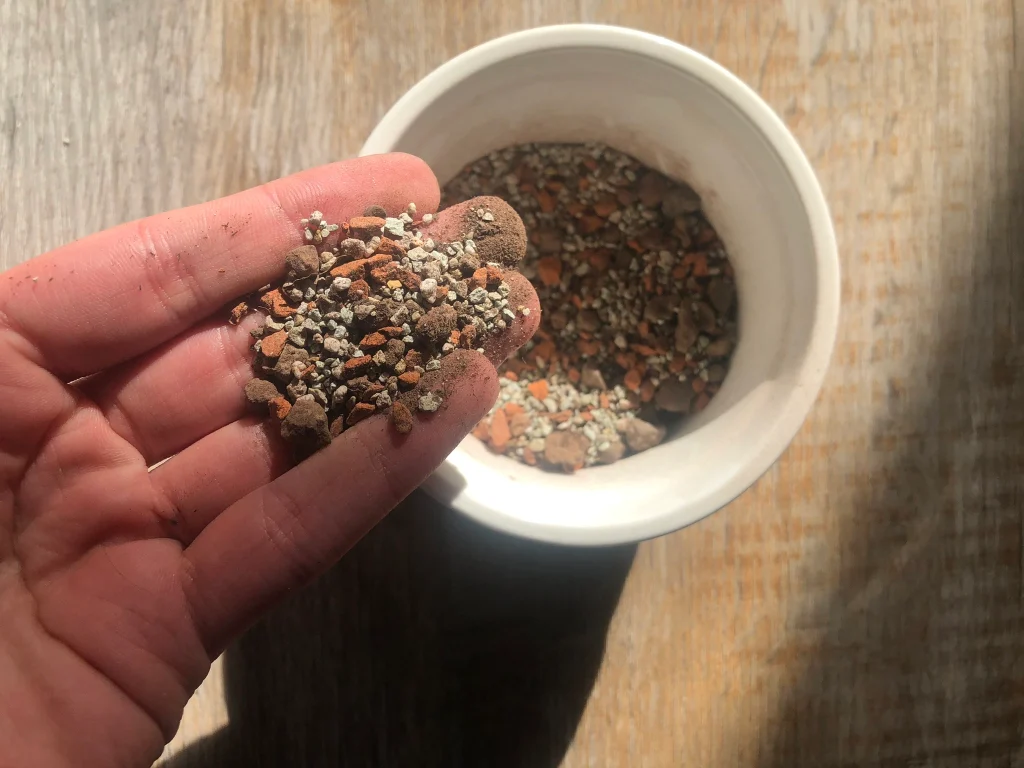
Temperature & Humidity
Succulents prefer warm, dry environments, making them ideal houseplants.
But you should be careful around winter times. Exposure to frost or prolonged periods of cold temperatures can damage or kill your succulent. On the other hand, excessively high humidity can cause fungal growth and other issues.
The bigger a succulent gets, the more likely it will survive cold nighttime without any problems. The smaller ones are the ones that you should look out for, especially during long winter nights.
There is no need for a heat lamp, it’s adequate to move your succulents to a heated room for the winter.
Fertilizer
Most succulents will not require additional nutrition from fertilizing. However, applying fertilizer can be beneficial for succulents that are growing in poor soil or in pots for an extended period. It can provide the necessary nutrients to keep the plant healthy and vibrant, to keep the plant glowing and, of course, growing.
I have personally never fertilized a succulent. If you repot your plants regularly, you will probably never need to either.
Common Large Succulents
Some succulents are slow-growers, and some will remain a lovely desk plant forever. It all depends mainly on the type of succulent but also on how much water, light, and nutrients the plant gets.
Let’s take a look at some succulents that you probably shouldn’t purchase as a desk plant because they can get huge.
Century Plant (Agave Americana)
Century plant, or Agave Americana, is one of many types of agave, and all of them can grow really big. I decided to talk about this specific type because it’s most commonly found as a houseplant.
This impressive succulent is native to the southwestern United States and Mexico, where it’s commonly found growing in desert areas. It can easily grow up to 6 feet (nearly two meters) tall and 8 feet (2.5 meters) wide!
Agave doesn’t require any special care, it grows best in a standard room temperature and in well-drained soil. Plus, if you take care of it long enough, it’ll produce a beautiful, tree-like flower. Unfortunately, it’ll die after. But it can take up to 10 years to bloom, that’s enough time to have fun with it.
Jade Plant (Crassula Ovata)
Crassula Ovata, also known as the Jade plant or Money Tree, is one of the most popular succulent houseplants. I also own one that I bought because it looks like a little bonsai that requires low to no care.
It’ll start as a cute little desk plant, but if you give it enough space, it can grow up to 5 feet (1.5 meters) tall. And with proper care, the Jade Plant can thrive for years and even produce lovely pink or white blooms in the winter. Fortunately, this one doesn’t die after blooming.
Yucca
Yucca plants are known for their sharp, sword-like leaves and large white flowers that bloom in the summertime. But at first glance, you wouldn’t say it’s a succulent, it looks more like a palm.
As houseplants, yuccas are easy to care for and can thrive even in worse lighting conditions.
Depending on the variety, it can grow up to 30 feet (9 meters) tall and spread to 25 feet (7.5 meters) wide. But don’t worry, smaller varieties that are common in households can get only to around 4 feet tall and wide (1.2 meters).
Euphorbia (African Milk Tree)
I’ll be honest with you, I don’t like the way euphorbias look. And many will agree with me because it’s not commonly seen as a houseplant. It looks like a cactus that branches dozen times.
Euphorbias can be easy to care for as they are drought-tolerant and require minimal watering, but they can also be toxic if ingested, so it’s important to handle them with care, especially with pets in the house.
They can grow up to 8 (2.5 meters) feet tall and 4 feet (1.2 meters) wide.
Aloe Vera
On the other hand, Aloe vera is very common all around the world. It’s not only good-looking but also commonly used to treat burns, acne, and more.
Aloe can grow up to 3 feet (1 meter) tall and 2 feet (0.6 meters) wide in optimal conditions. But, if you don’t want yours to grow to that size, it’s very easy to limit it by cutting off the leaves.
Succulents that Stay Small
Not every succulent can surpass the average size of a human. Some will stay small.
Echeveria
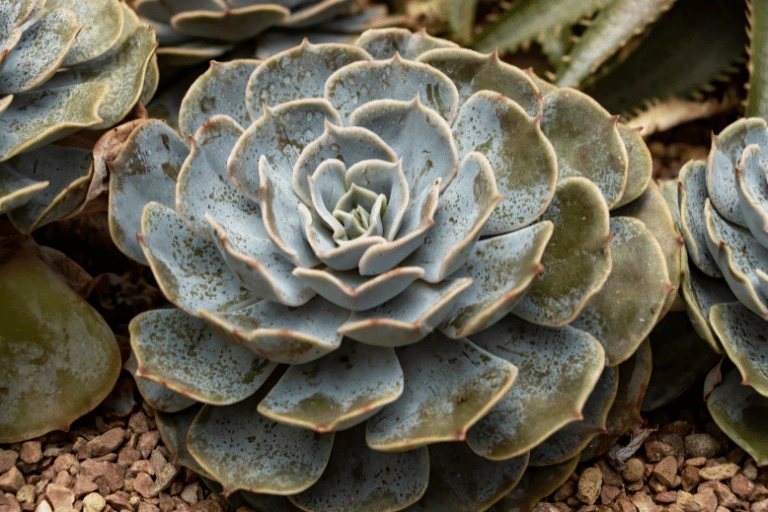
Echeveria is a popular small succulent that comes in a variety of colors, from dusty pink to bluish-green. These rosette-shaped plants are native to Mexico and are easy to care for, making them a great choice for beginners.
Echevria can stay on your desk forever, as it only grows to about 5 inches tall and wide (12 centimeters).
Haworthia

Haworthia is another small succulent that is often grown in pots and terrariums, as they remain small and compact and grow to only about 3 inches (7 centimeters) in height.
It comes in a wide variety of shapes, and one type even looks a lot like a miniature version of Aloe Vera.
Gasteria
Gasteria is a really good choice for a tabletop plant, as they are relatively easy to care for, prefering indirect sunlight, and can survive for long periods without water.
It’s a small grower, but if you give it the space, it can grow up to 24 inches (60 centimeters).
How to Encourage Succulents to Grow Larger
As you might have found out from the rest of the article, the key to growing bigger and healthier succulent is to keep it in ideal conditions.
The only universal tip that works for every succulent is to make sure the plant has adequate space to grow. Make sure its pot is large enough and repot it regularly, ideally every one to two years, depending on its growth during that time.
Other than that, you’ll have to research your plant to find out what it wants and what the optimal growth environment looks like. Including whether the succulent like filtered or direct sun, what is the optimal water schedule, and soil type.
Encouraging succulents to grow larger also involves redirecting the plant’s energy toward growth rather than reproduction. Sure, flowers are beautiful, but they take up a lot of energy that can otherwise be used for growth. So you can also consider removing any blooms that your succulents produce.
How to Keep Succulents Small
While some like to showcase their plants in full size, others may prefer to keep them small and compact. Maybe the plant is meant to stay on your table, or it’s an important part of an artwork.
It’s completely possible to limit your succulent growth. The key here is to create less than ideal conditions for it. This means restricting its sunlight, postponing the watering schedule, and, most importantly, keeping them in smaller pots.
The limited space will restrict their root growth and keep them from getting too big.
But don’t push it too far, you don’t want your succulent to die.
Common Issues with Overgrown Succulents
When succulents outgrow their pots or garden spaces, they can begin to develop a range of issues.
One common issue is that the leaves may start to droop or become discolored due to a lack of space for the roots. Additionally, overgrown succulents can become top-heavy and may fall over, causing damage to themselves or surrounding plants.
The increased growth also means that the succulent will require more water and nutrients, which can be difficult to provide if the pot or garden space is too small.
Not to mention that large succulents may have a higher probability of pest infestation. This is because as the plant grows larger, it can become more difficult to inspect all parts of the plant for pests. And overgrown succulents may have more nooks and crannies where pests can hide and thrive.
That’s why it’s important not to confuse keeping your succulent growing and neglecting its care. Although trimming or cutting parts of your succulent is not always necessary, it can help in some situations. For instance, if you notice any dead or yellowing leaves, you should remove them with a clean pair of scissors or pruning shears to prevent the spread of any potential diseases. But be cautious when trimming succulents, as they are sensitive to injury and can be damaged if not handled properly.
Bottom Line
The size matters. Or does it?
At least when it comes to succulents, it does. The larger a succulent gets, the more troubles can occur, so it needs more tailored care. With perfect care, you can get your succulent to grow bigger, and with non-perfect care, you can make it stay smaller. In the end, it’s only up to you.
Did you know that there are also some succulents that can be eaten? Cactuses are a part of the succulent family, and eating them provides some amazing benefits (like lowering blood sugar or cholesterol). To find out more, make sure to check out my guide, which starts with the question of whether cactus is a fruit or a vegetable (spoiler, it’s both) and ends up with great tips.


